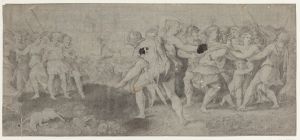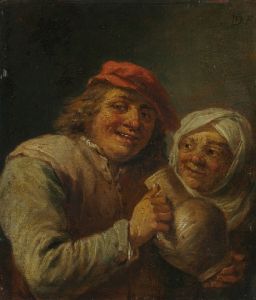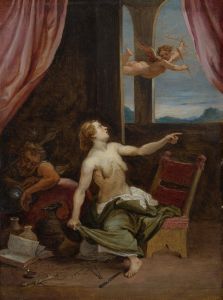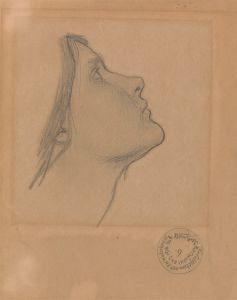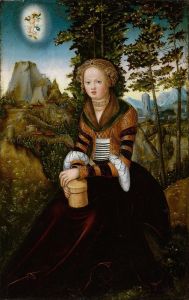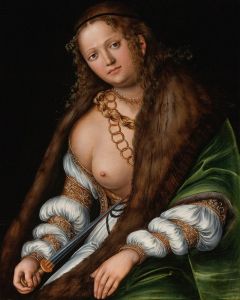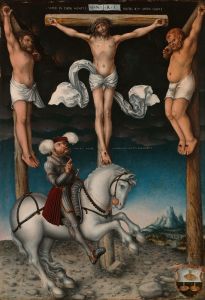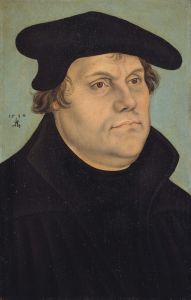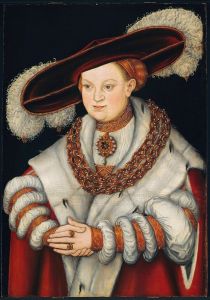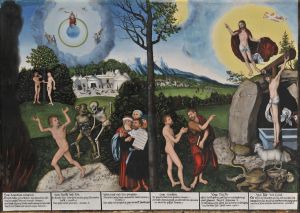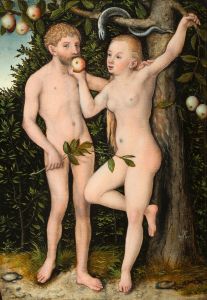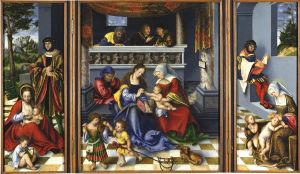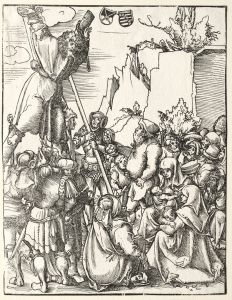
Old Man Beguiled By Courtesans
A hand-painted replica of Lucas Cranach the Elder’s masterpiece Old Man Beguiled By Courtesans, meticulously crafted by professional artists to capture the true essence of the original. Each piece is created with museum-quality canvas and rare mineral pigments, carefully painted by experienced artists with delicate brushstrokes and rich, layered colors to perfectly recreate the texture of the original artwork. Unlike machine-printed reproductions, this hand-painted version brings the painting to life, infused with the artist’s emotions and skill in every stroke. Whether for personal collection or home decoration, it instantly elevates the artistic atmosphere of any space.
"Old Man Beguiled by Courtesans" is a painting by Lucas Cranach the Elder, a prominent German Renaissance artist known for his portraits, religious scenes, and mythological subjects. Cranach was born in 1472 in Kronach, Germany, and became one of the leading painters of his time, closely associated with the court of the Electors of Saxony and the Protestant Reformation.
The painting "Old Man Beguiled by Courtesans" is believed to have been created around 1537. It depicts an elderly man surrounded by young women, who are often interpreted as courtesans. The scene is a moralistic one, common in Cranach's oeuvre, which frequently explored themes of virtue and vice, often with a didactic purpose.
In the painting, the old man appears to be entranced or seduced by the courtesans, who are depicted with a mixture of allure and cunning. The women are dressed in elaborate, fashionable clothing of the time, which contrasts with the man's more modest attire. This contrast highlights the themes of temptation and the folly of succumbing to it, a common moral lesson in Renaissance art.
Cranach's style is characterized by its attention to detail, vibrant colors, and the use of fine lines to delineate forms. In "Old Man Beguiled by Courtesans," these stylistic elements are evident in the intricate patterns of the women's clothing, the expressive faces, and the careful rendering of textures. The composition is balanced, with the figures arranged in a way that draws the viewer's eye around the scene, emphasizing the interaction between the old man and the courtesans.
Lucas Cranach the Elder was a master of both religious and secular subjects, and his works often contained layers of meaning that reflected the complex social and religious changes of his time. "Old Man Beguiled by Courtesans" can be seen as a reflection of the moral concerns of the period, warning against the dangers of vice and the seductions of worldly pleasures.
Cranach's workshop was highly productive, and he often collaborated with his sons, particularly Lucas Cranach the Younger, who continued the family tradition of painting after his father's death in 1553. The elder Cranach's influence extended beyond his own works, as he played a significant role in the development of Northern Renaissance art and left a lasting legacy through his numerous paintings, prints, and drawings.
Today, "Old Man Beguiled by Courtesans" is held in various collections and continues to be studied for its artistic and historical significance. The painting exemplifies Cranach's skill in combining narrative content with detailed, expressive imagery, making it a valuable piece for understanding the cultural and artistic context of the German Renaissance.





